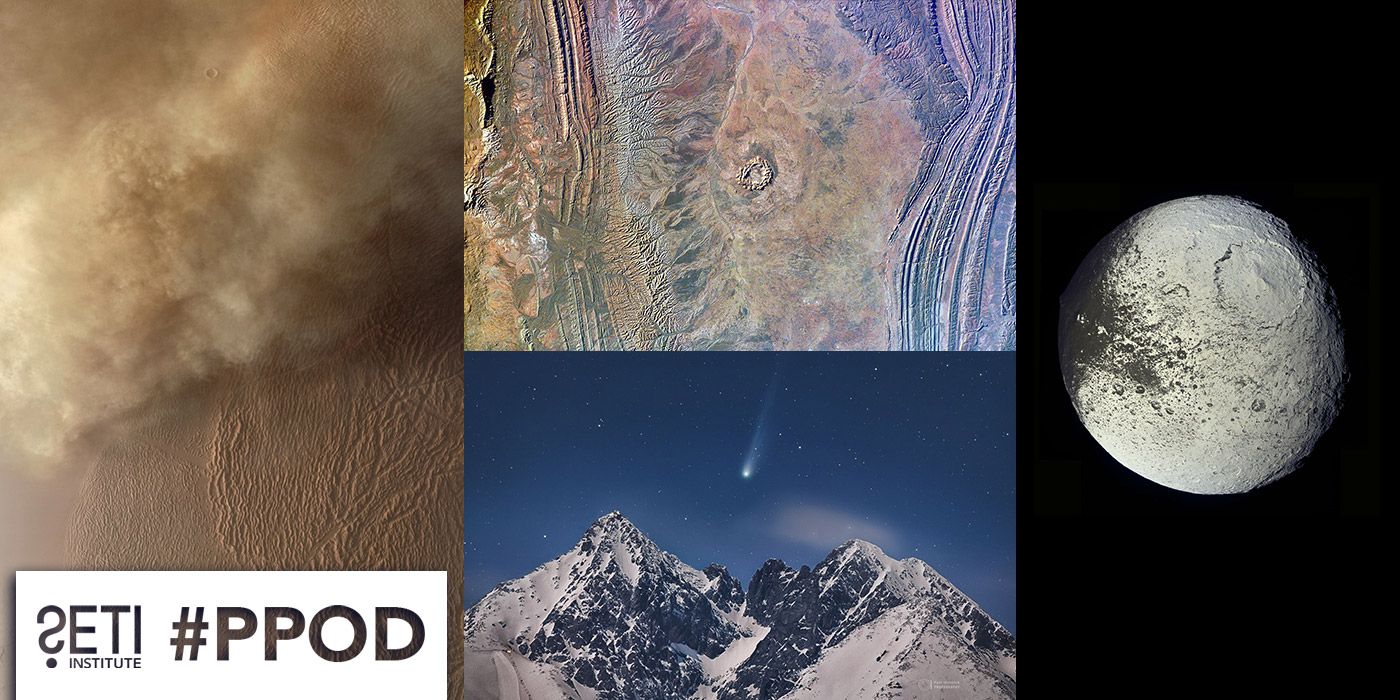
Planetary Picture of the Day
Week of April 1, 2024
A beautiful comet in the sky, an ancient impact crater in Australia, a Martian dust storm, and Saturn's moon Iapetus.
Monday, April 1, 2024
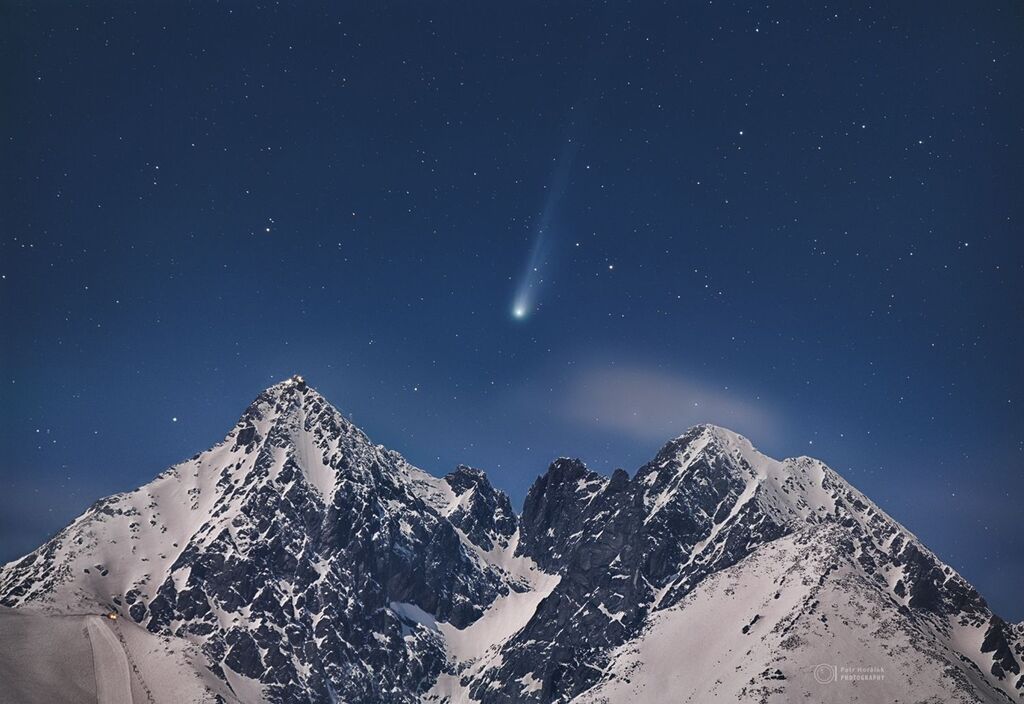
Comet 12P/Pons-Brooks over the High Tatra Mountains
Comet 12P/Pons-Brooks graces the evening sky above the summits of Kežmarský štít (8,389 ft/2,557 m), at right, and Lomnický štít (8,635 ft/2,632 m), at left in the Tatra Mountains of Slovakia.
At the summit of Lomnický štít is a small domed building. This structure is the Skalnaté pleso Observatory, one of the highest astronomical observatories in central Europe. It's known for its success in visual comet hunting. In fact, between 1946 and 1959, when comet Pons-Brooks last visited our Solar System, several comets were discovered here.
Photo taken from Veľká Lomnica, Slovakia, about 11 km from the summits.
Wednesday, April 3, 2024
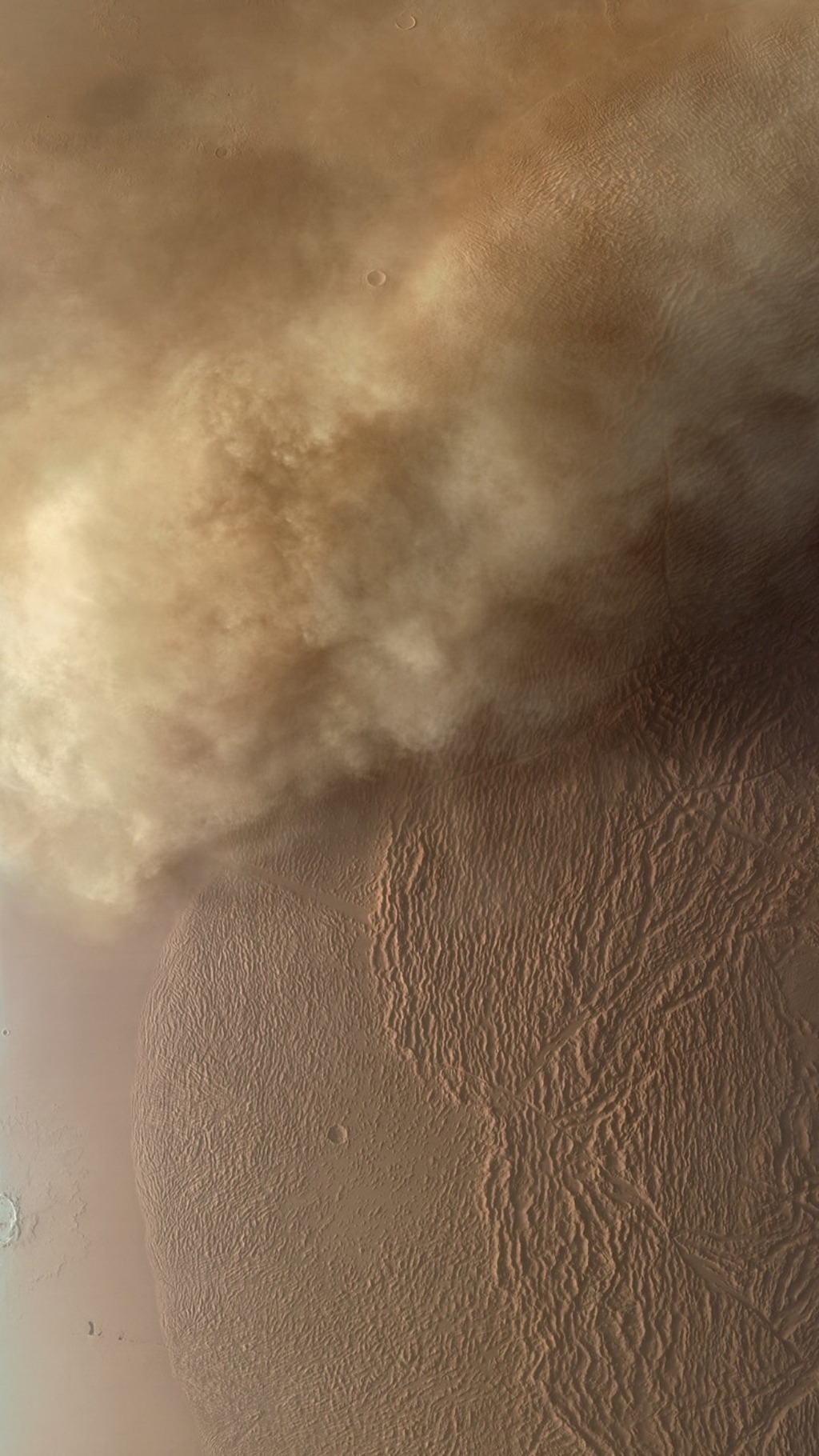
Processing: Andrea Luck (https://buff.ly/3J10x0y)
Martian Dust Storm
This massive dust storm was captured by multiple Martian orbiters on June 1, 2022. The composite here is compiled from images taken by China's Tianwen-1 spacecraft. The storm looms near the mighty Olympus Mons (not seen in this photo).
Thursday, April 4, 2024
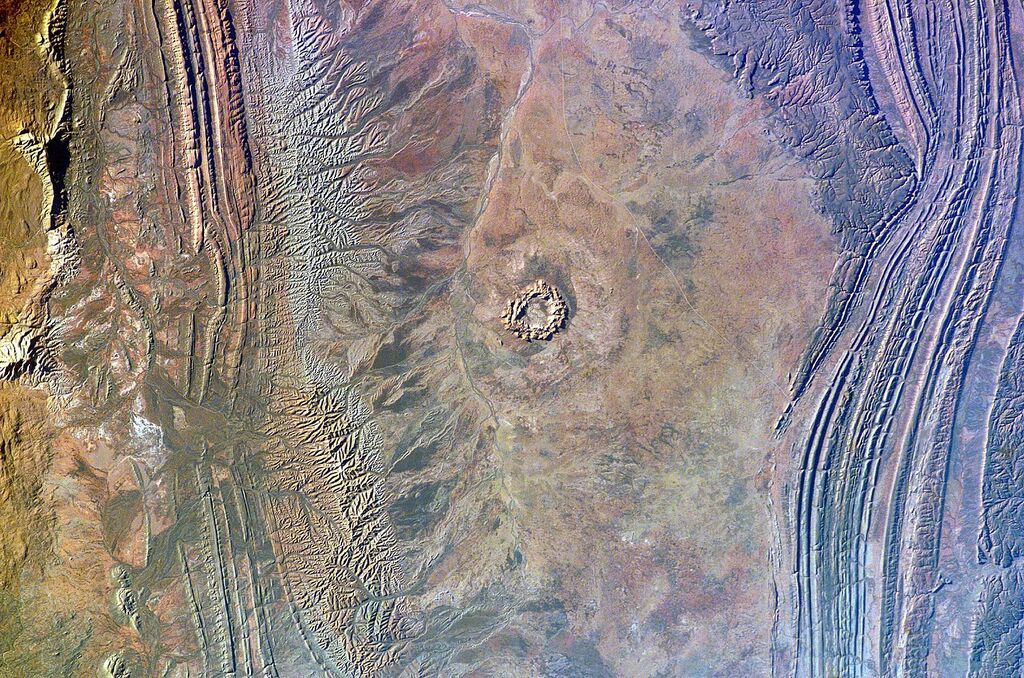
Australian Impact Crater
This spectacular view of Gosses Bluff (known as Tnorala to the Aboriginal people), Northern Territory, Australia, was photographed from the International Space Station. About 142 million years ago in the early Cretaceous period a meteorite probably one kilometre in diameter struck in the heart of Australia, blasting a 22-kilometre-wide hole out of the earth's crust.
The rim of this large crater has since been weathered and eroded away. All that remains is an impressive concentric mountain range in the centre of the original crater, the famous Gosses Bluff. It has a diameter of almost five kilometres. Its peaks rise up to 152 metres into the air. This ring structure grew out of the centre of the crater floor right after impact, as a kind of countermovement. The formation process is similar to that which causes water to shoot upwards after a stone is thrown into it.
Friday, April 5, 2024
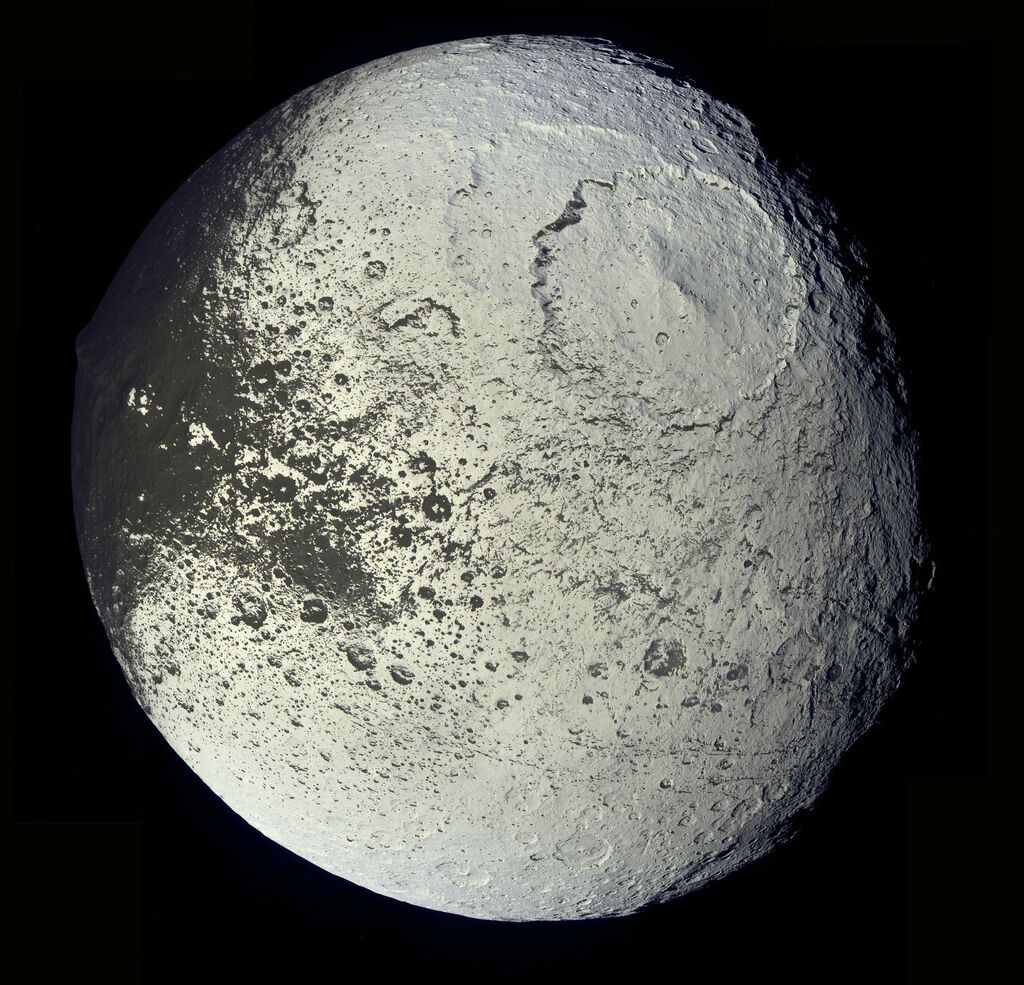
Iapetus
Taken by NASA's Cassini spacecraft on September 12, 2007, this image of Saturn's outermost large moon has been assembled from infrared, green, and ultraviolet-filtered images (IR1/GRN/UV3). The large craters Engelier and Gerin are near the top right.





